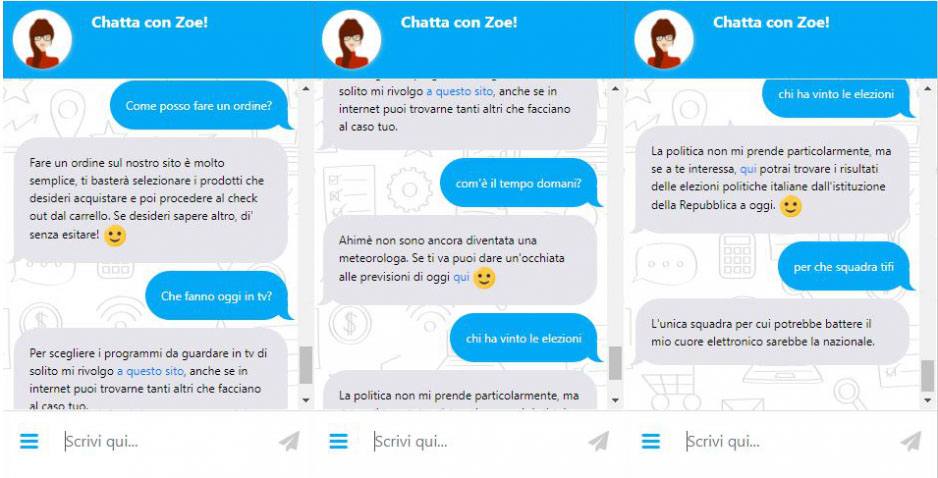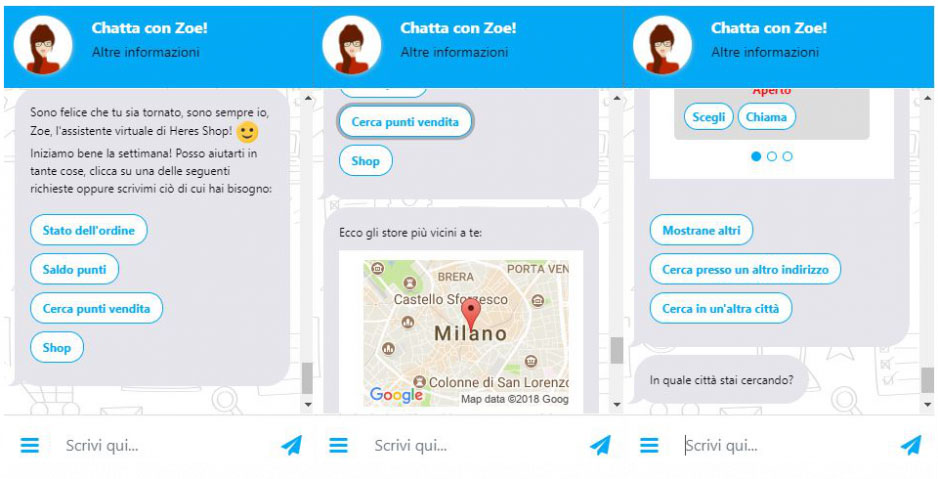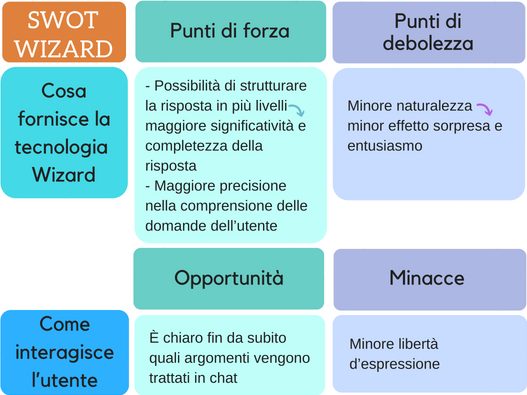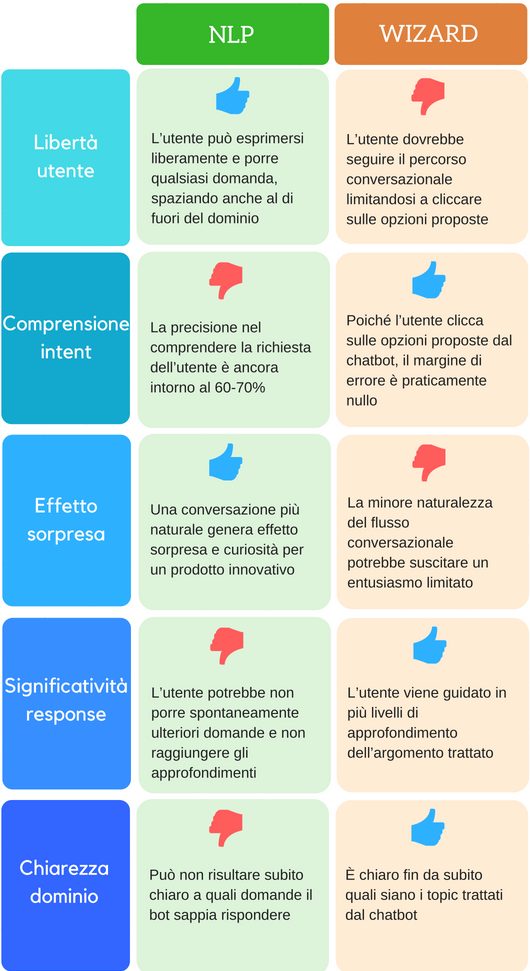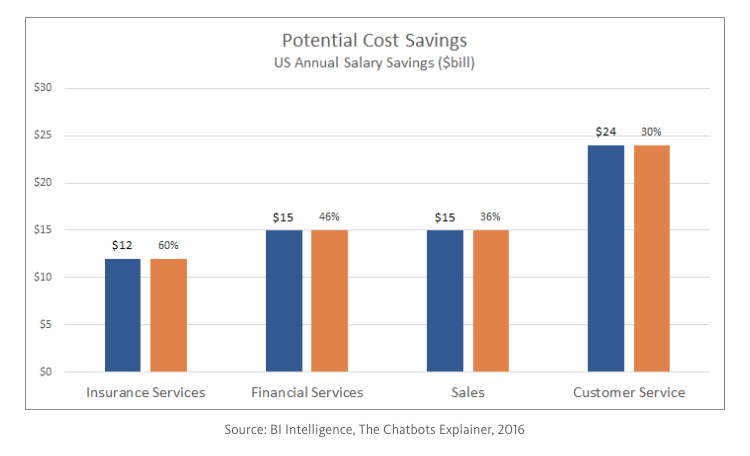The word “chatbot” is mistakenly used as a synonym of Artificial Intelligence, but it isn’t correct. The bot is a conversational interface, which receives questions written in a natural language, and then gives a correct answer. On the other hand, Artificial Intelligence allows chatbots to improve and update their knowledge.
Chatbots are already used in a lot of fields, such as Healthcare and Customer Service. Nevertheless, there are still some doubts about their use and their utility; moreover, people usually give rushed answers, which are not based on proved information. In this way chatbot’s credibility is in danger.
So let’s clarify and talk about 5 common chatbot and AI mistakes
1. Will chatbots replace humans?
First of all, when you think about a chatbot, you probably think about a sort of iper-tech robot, like the ones of a sci-fi film, which wants to take control over humans. But that’s impossible. The bots are programmed to be efficient, fast and always available. But they can’t be perfect. In fact, they need a lot of collaboration with human beings, in order to understand some things about language, that they can’t fully understand.
That’s why chatbots can’t replace human beings and probably never will. Nevertheless, they are a useful resource, that can completely change the paradigm up to a new Human-AI Approach.
Furthermore, according to the World Economic Forum research “The Future of the jobs”, before 2022 there will be about 133 millions of new job places thanks to Artificial Intelligence. Only 75 millions will be eliminated.
It would be a mistake to think that Artificial Intelligence requires only experts and scientists, because it needs also a lot of digital workers. Like every other expanding sector, in fact, Artificial Intelligence has got both a bright and a dark side. To read more about this topic: Betschon S. (2019, October) I precari dei robot.Internazionale, 1329, 64-66.
2. A chatbot is too difficult to understand
Wrong. The bot is based on a language easy to understand, because it’s similar to the way in which human beings communicate. The abbreviation “NLP” (Natural Language Processing) indicates that the bot can understand and answer in the best way possible to a user’s questions, even if they often use abbreviations, formal words or expressions, that seem unusual or that were not planned during the design phase.
A lot of people don’t even realize that they are talking to a chatbot instead of a human being!
We’ve already written something about it in this article.
3. It’s very difficult to implement a chatbot for your business
Wrong, again. To say it better, we have to clarify that the approach, with whom you think and organize this technology, makes the difference. It is very complex, so you need to have the ability to personalize the client’s solution as much as possible. In this way, you make it unique, easy to recognize and perfect for his/her needs.
If you choose the personalized solution offered by Heres, you can have the perfect bot for your enterprise. Heres develops multi-channel and multi-language chatbots, which optimize Business Performances and Customer Experience. We create every interface in collaboration with clients. Together we plan every step of workflow, in order to have a unique and highly personalized product. The advantage of our product is its transversality and adaptability for every kind of business context.
4. Can chatbots think?
It is an intelligent machine, so can it also think? Absolutely not.
Human thought is, neurologically, a series of processes so complex that we can’t replicate them. The structure of the Artificial Intelligence is similar to the brain’s neural web, but it isn’t able to make actions that weren’t previously planned. This extremely elaborate structure is useful in order to verify which conditions activate an action in a specific situation. The bot is based on a written code and it only does something that was previously predetermined, so that it can’t tell jokes if it wasn’t planned to do it.
We are far far away from an AGI, or “Artificial General Intelligence”, that is the possibility of a machine that can think by itself like a human being.
5. One day bots will do whatever they want
Machine Learning has these goals: to improve performances of an algorithm written by humans and to improve or correct something already existing, without writing a single line of code. A chatbot or a Voice Assistant will never take the lead in order to do something that they are not programmed to do. Bots need to be trained to do specific actions by a human being, who has to create and organize a very complex process. For this reason, who works with these technologies may need to check that everything is okay and modify some details in every moment.
The supervision and the responsibility are always human.
Chatbot are amazing allies!
A chatbot isn’t an enemy, on the contrary it can be the perfect solution to improve the management of a Business Communication. Moreover. a chatbot helps answering clients’ questions 24/7 and faster, but it can also help with customers’ relationship and sales. Heres has succeeded in an unexplored field, thank to its innovative solution. Heres offers a total management of the bot from its creation to its maintenance, through the collaboration between bots Developers and Conversation Designers. The chatbot can easily become a true ally for all of us, because of its technology that want to make the everyday life easier.
If you want to know more, contact us!



